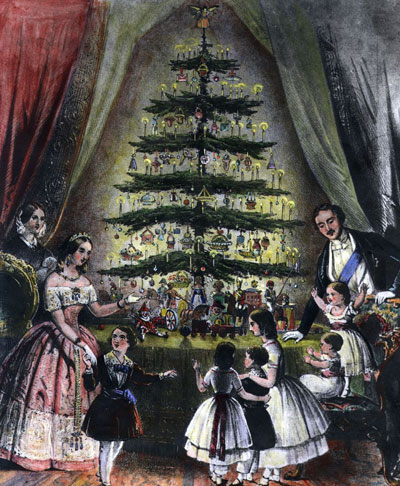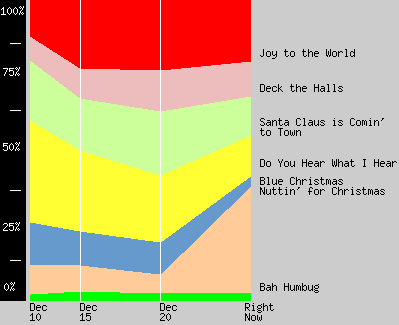
- Christmas Weblog
- Christmas Past
Christmas '22
 Christmas '21
Christmas '20
Christmas '19
Christmas '18
Christmas '17
Christmas '16
Christmas '15
Christmas '14
Christmas '13
Christmas '12
Christmas '11
Christmas '10
Christmas '09
Christmas '08
Christmas '07
Christmas '06
Christmas '05
Christmas '04
Christmas '03
Christmas '02
Christmas '01
Christmas '00
Christmas '99
Christmas '21
Christmas '20
Christmas '19
Christmas '18
Christmas '17
Christmas '16
Christmas '15
Christmas '14
Christmas '13
Christmas '12
Christmas '11
Christmas '10
Christmas '09
Christmas '08
Christmas '07
Christmas '06
Christmas '05
Christmas '04
Christmas '03
Christmas '02
Christmas '01
Christmas '00
Christmas '99
- Christmas Present
- Christmas Yet to Come
- There'll be parties for hosting
- Marshmallows for toasting
- And caroling out in the snow
- There'll be scary ghost stories
- And tales of the glories of
- Christmases long, long ago
Actually, telling ghost stories by the flickering light of the Yule Log at Christmas time was all the rage in Victorian England. Dickens's Christmas Carol doesn't begin to scratch the surface. Evidently they liked scaring the pants off each other for Christmas, and there was a whole class of writers working on turning out material for the job. It never really caught on in the Colonies. Americans may have just been too pragmatic for such other-worldy stuff. With the exception of Dickens. And Mariah Carey, maybe.
Originally a day of prayer and fasting, Christmas gradually migrated to one of making merry and eating and drinking. Before that, its observance had evolved from a merger between the spiritual practice of honoring Christ's birth and the observance of persistent pagan traditions (Saturnalia, Solstice, Yule and others) of a decidedly more secular character.
By the beginning of the 19th century Christmas was hardly celebrated. Many businesses did not even consider it a holiday. But that was all about to change.
Many attribute that change to Queen Victoria and her marriage to the German-born Prince Albert, which introduced some of the most prominent aspects of Christmas as we observe it today. In 1848 the "Illustrated London News" published a drawing of the royal family celebrating around a decorated Christmas tree festooned with small presents, a tradition reminiscent of Prince Albert's childhood in Germany.

The Victorian age, the 63 years of Queen Victoria's reign from 1837 until her death in 1901, was a time of great power and wealth for Britain as it expanded its empire across the globe. The era gave rise to the idea of Christmas as a celebration centered around family. The preparation of the feast, elaborate dining, holiday decorations, exchanging gifts, entertainments and parlor games—all were essential to a festival shared by the whole family.
Gift-giving, traditionally done at New Year, moved as Christmas became more important to the Victorians. The gifts were modest at first—fruit, nuts, sweets and small handmade trinkets, usually hung on the Christmas tree. However, as gift-giving became more central to the holiday, the gifts became bigger and shop-bought. And they moved to under the tree.
Even the roast turkey as a centerpiece of the Christmas dinner had its beginnings, strangely, in Victorian England. It was adopted first by the more wealthy of the community. But coming in sizes more practical for middle class family gatherings, turkey became the dominant holiday dish by the beginning of the 20th century.
Charles Dickens did not so much invent the Victorian Christmas in his book A Christmas Carol, but did do much to popularize the Victorian notions of a holiday emphasizing family gatherings, festive dining, charitable acts, peace and goodwill throughout the English-speaking world.
The History Channel has a web page that spotlights 25 Christmas traditions, and their origins, that help make our holiday not just merry and bright but memorable. Most are familiar even if their history may not be. A few are as odd and forgotten as ghost stories around the old Yule log fire. Herewith a sample. (For the full story, click here)
This year's Christmas Song Selection
|
"Christ is Born,” a contemporary religious Chistmas song written by Bill and Gloria Gaither and performed by Tony Greene, Kim Hopper (his sister) and TaRanda Kiser (his wife). Religious music royalty all. (It’s said the Gaithers are to Christian music what the Beatles are to pop music.) But you needn’t be a committed devotee of the genre to appreciate the sheer joyful enthusiasm, flat-out tunefulness and, yes, uplifting message of this celebration of what is supposed to be the true meaning of the season. A really good piano sideman to boot. It first apeared on the Gaither Gospel Series album Christmas in the Country, released in 2000. A little outside of mainstream FM holiday playlists, maybe, but what religion is supposed to do for you, this song surely delivers on. Worth a listen this holiday season. (Tony Greene died in 2010 at the Charlotte Medical Center at age 41.)
|
Christmas Pickle Ornaments
Pickle ornaments first appeared in the late 1800's. Their origin is murky but likely grew from a Woolworth's marketing gimmick after the retailer received imported German ornaments shaped like a pickle and needed a sales pitch to move them. The idea was to hide the green pickle somewhere on the tree, and the first child to find it would get to open the first present Christmas morning or win an extra present. The pickle endures. The tradition for the most part does not.
Gingerbread Houses
Queen Elizabeth I gets credit for the early decorating of gingerbread cookies, but it’s the Germans who lay claim to starting the gingerbread house tradition. When the German Brothers Grimm wrote “Hansel and Gretel” a new holiday tradition was born.
Cookies and Milk for Santa
Leaving a snack for Santa and his reindeer dates back to ancient Norse mythology, Americans began to sweeten up to the tradition during the Great Depression in the 1930s, as a way of showing gratitude during a time of struggle.
Door Wreaths
Wreaths have been around since ancient Greek and Roman times. The evergreen Christmas wreath, often adorned with boughs of holly, eventually took on a Christian meaning, with the circular shape representing eternal life and the holly leaves and berries symbolic of Christ’s crown of thorns and blood, according to the New York Times. Today’s wreaths, which come in all varieties, from flowers and fruit to glass balls and ribbon to artificial and themed, are most often seen as a secular winter tradition.
Christmas Cards
The first official Christmas card debuted in 1843 in England. It bore the simple message, “A Merry Christmas and a Happy New Year to You.” The idea of a mailed winter holiday greeting gradually caught on in both Britain and the U.S., with the Kansas City-based Hall Brothers (now Hallmark) creating a folded card sold with an envelope in 1915. Today, according to the Greeting Card Association, more than 1.6 billion holiday cards are sold annually.
Candy Canes
Candy canes date back to 1670 Germany. The red and white peppermint sticks arrived stateside in 1847, when a German-Swedish immigrant in Wooster, Ohio placed them on a tree. Whether consumed as a treat or hung as decoration, they are the No. 1-selling non-chocolate candy during the month of December,
Eggnog
This yuletide cocktail stems from "posset," a drink made with hot curdled milk and ale or wine, from medieval England, American colonists get credit for adding rum. It is said that George Washington had his own special, and rather potent, recipe, although according to Mount Vernon’s librarians no eggnog recipe has been definitively linked to Washington. Here's the story and the recipe behind it: The Homemade Eggnog Recipe from Mount Vernon. Shades of Martha Stewart. Skol, y'all.


Dec. 10 - 3.18 Dec. 15 - 3.63 Dec. 20 - 3.64 Dec. 25 - 3.76
Dec. 10 - 3.38 Dec. 15 - 3.69 Dec. 20 - 4.89 Dec. 25 - 4.12
|
34%
|
12%
|
14%
|
12%
|
16%
|
3%
|
7%
|